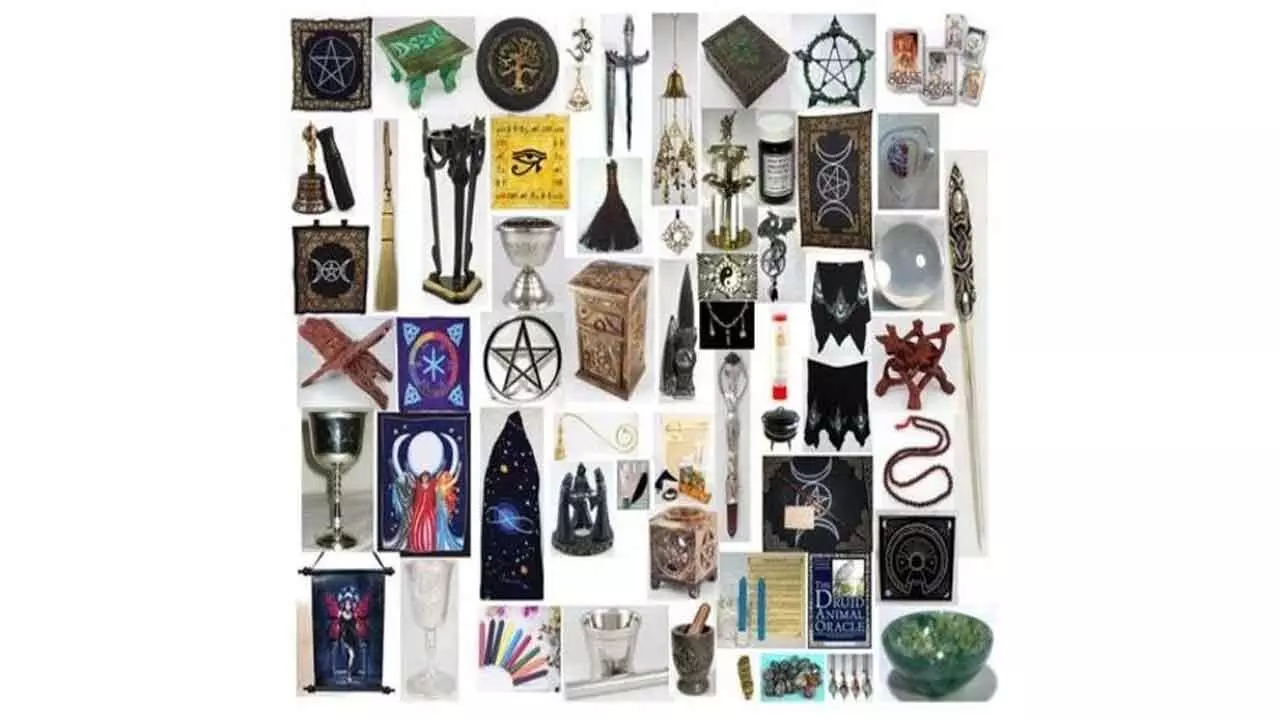Emotional Economics Driving Contemporary Consumption Of ‘Hopium’ Products
Hopium goods are all over-from manifestation diaries, tarot card readings and gemstone bracelets to astrological applications
Emotional Economics Driving Contemporary Consumption Of ‘Hopium’ Products

The absence of control and supervision raises more questions. Many items lack scientific foundation for their audacious assertions; few are governed by consumer protection criteria
Uttam Chakraborty AndSantosh Kumar Biswal
Business author Simon Sinek has rightly said, “People don't buy what you do, they buy why you do it.” Now, hope is a product that is consumed, and consumer behaviour can be understood and marketed as well.
American actress Lady Gaga, Beyoncé and Ariana Grande have publicly uttered their interest in astrology for linking to their lives and career plans. Some Bollywood celebrities and business tycoons have incorporated astrology products in their lives. However, Bollywood actress Suchitra Krishnamoorthi recently slammed astrology for ‘disturbing’ predictions.
Unusual category of goods—hopium products—has found rich ground to flourish in Indian society weighed by uncertainty—economic upheaval, personal crises, and emotional exhaustion.
A combination of “hope” and “opium,” the phrase encapsulates the core of belief-based consumption providing emotional consolation in abstract ways. These are not technological advances or medical prescriptions. They are instead symbolic items, digital services, and routines providing psychological comfort, spiritual confidence, and direction.
Hopium goods are all over from manifestation diaries to tarot card readings to gemstone bracelets to astrological applications. sold as companions—things you turn to when reason fails and life gets too much, not cures—they are not sold as cures. Though they don't guarantee certain results, they offer something just as desired: emotional support, personal control, and tranquility.
The need for such goods is fast increasing worldwide. In many affluent nations, spiritual well-being has turned into a multibillion-dollar business. It is no longer limited to underground communities or specialty stores. Tech entrepreneurs, lifestyle coaches, and wellness gurus have exploited the rising desire for significance and comfort. Especially among younger audiences, apps providing daily horoscopes, numerology insights, or tailored energy reports have become more popular. These digital platforms have repurposed age-old beliefs into slick, bite-sized formats meant for daily use.
India, with its rich history of astrology, rituals, and cultural symbolism, has welcomed hopium goods in a way that mixes legacy with modern convenience. Once residing in the domain of temples and family customs, what today exists on smartphones and e-commerce sites.
Mobile apps provide astrological forecasts customised to work, marriage, or health. Often with next-day delivery, online markets offer anything from crystal-infused water bottles to rudraksha necklaces. Particularly among young professionals and students, hopium goods have become as normal in urban India as any other wellness practice.
Today’s consumer desires experiences that confirm their feelings, not only goods. Hopium goods fulfill that front. They let individuals design routines in a society that sometimes seems chaotic. Especially when life offers no certainties, a morning horoscope, a bracelet worn for protection, or a candle lit with purpose can be rather soothing. These tiny rituals provide psychological rhythm—feeling of order in chaotic times. Furthermore, internet marketing and social media have significantly changed the way hopium products are viewed and bought. Influencers create a lifestyle story combining luxury, self-care, and cosmic alignment by casually including astrology, manifestation methods, and spiritual accessories into their material.
The hopium economy's specific strength lies in its ability to draw on both personal want and group feeling. The social validity around such behaviors grows as more people embrace them, therefore hastening their attraction. However, using hopium goods more widely brings its own issues.
Sometimes, the emotional comfort they offer can develop dependency. What starts as a useful practice might turn into a non-negotiable habit. Not having a fortunate charm or not verifying a daily forecast could make some people uncomfortable or exposed.
The absence of control and supervision raises more questions. Many items lack scientific foundation for their audacious assertions; few are governed by consumer protection criteria. Often, the wording in ads plays on emotional weakness to promise changes in life, better luck, or relationship success. The duty is twofold: customers should approach these products with a mix of faith and judgment and marketers should be ethically cautious. When sold, blind trust can quickly turn into exploitation.
The discussion on hopium products must go beyond unthinking acceptance or rejection. This is not a straightforward question of believers against doubters. Rather, it is about knowing the emotional economics driving contemporary consumption. The increasing commercialization of that emotional space and the ethical issues that surface when hope is packaged, priced, and marketed as lifestyle commodity call for more focus.
Balanced awareness is the path forward. While consumers should suspect marketing stories exploiting anxiety, uncertainty, or magical thinking, they should also feel liberated to utilize hopium products if they provide tranquility or motivation. Companies in this sector must make sure their message honors the emotional reality of their consumers rather than exploiting it. Policy makers also have to take into account consumer education programs encouraging ethical emotional spending, particularly in digital settings where belief is easily marketed.
(Uttam Chakraborty is an Associate Professor at School of Management, Presidency University Bengaluru. Santosh Kumar Biswal is an Associate Professor at the Department of Journalism and Mass Communication, Rama Devi Women’s University, Bhubaneswar)

